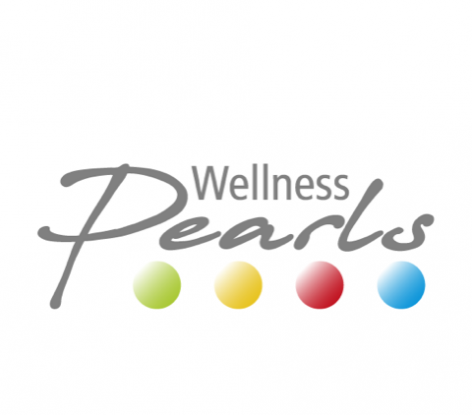Wellness dictionary
Little ABC for your spa-break questions ...
In their treatment discriptions, wellness hotels often use technical terms, which are hard to understand for potential guests. We have therefore collected and defined the most relevant terms in our small wellness ABC. A tip: Our wellness dictionary also supports word requests. You don't need to know the exact wording.
Select letters or search term:
Biofeedback
Biofeedback - what's that?
Biofeedback describes the active influencing of the nervous system by humans and is considered a method of behavioral medicine. Biofeedback is primarily about recognizing and perceiving the signals of your own body. For this, the guest is connected to electrical sensors with which he receives information (feedback) about the body (bio). Together with a biofeedback therapist, interested parties learn to actively control apparently subconscious body processes. The biofeedback method is used when someone wants to actively influence their breathing, blood pressure, heartbeat or muscle tension. The therapy is recognized internationally.
Biofeedback - how does the therapy work?
As part of a biofeedback therapy in a wellness hotel, therapist and guest begin with an initial consultation. The therapist helps the guest to increase the perception of their own bodily functions by expressing and accepting their symptoms. This step is important because many people are not even aware of where the stress, the uncomfortable feeling or the dissatisfaction come from. The physical feedback on these sensations is not always clear. The analysis can therefore sometimes take some time. In this case, the therapist and wellness guest focus on possible causes and backgrounds. The initial discussion also involves explaining the details of the therapy: How does biofeedback therapy work? When is biofeedback used? does biofeedback work?
Types of biofeedback
The therapist may use various biofeedback methods that are tailored to personal health problems and goals. This includes:
- Brainwaves: This method uses head sensors to monitor brainwaves using an electroencephalograph.
- Breathing: During respiratory biofeedback, tapes are placed around the abdomen and chest to monitor the breathing pattern and frequency.
- Pulse: With this type of biofeedback, finger or earlobe sensors or sensors are attached to the chest, abdomen or wrists using an electrocardiograph to measure heart rate and heart rate variability.
- Muscle: With this method of biofeedback, sensors with electromyography are placed over the skeletal muscles to monitor the electrical activity that causes muscle contractions.
- Sweat glands: Sensors attached to the fingers, palm or wrist with an electro-dermograph measure the activity of the sweat glands and the amount of sweat on the skin.
- Temperature: Sensors attached to the fingers or feet measure the blood flow in the skin. Since the temperature often drops during stress, a low reading can cause the program to start with relaxation techniques.
How do biofeedback and neurofeedback work?
Biofeedback therapy works by viewing the body's reactions directly on a monitor. Through these recordings, the guest recognizes and feels how he can actively influence apparently uncontrollable functions of the body. An example of this is migraines. The guest now learns together with the practitioner how to relax their neck muscles so that at least one trigger for the pain is treated.
Neurofeedback specifically refers to brain activity. In order to learn better feedback from your own body, this form of therapy places a special focus on the central nervous system in the brain. Similar to biofeedback, the body functions are mirrored with the help of a computer.
Stress test in biofeedback
At the start of therapy, the participant takes a stress test. In addition to breathing and muscle tension, the pulse is a decisive criterion for recognizing the stress value of the wellness guest in the context of the biofeedback therapy. The stress test takes several minutes, during which the guest sees on a monitor how his body functions react to different stimuli. For example, the participant should relax in order to then experience unexpected moments of stress and see the reaction of his body to them on the monitor. The stressors have different intensities, so that the participating hotel guest cannot prepare for a possible next phase. In the evaluation, the biofeedback therapist and guest then see which parameters the guest responds to. Since every body is different, there are also individual stress patterns. Based on the results, how well the participant can relax and which stimuli trigger the most stress, the therapist and biofeedback participants then create a program lasting several days.
How does biofeedback therapy work?
The biofeedback therapy works with various sensors such as a pulse sensor, breathing belts, welding or temperature measuring devices. In different moments of tension or relaxation, the biofeedback participant sees the signals of his own body directly on a diagram: What do I react to in particular? What signs can I still see in case of stress or pain? The therapist gives the participant instructions on how to take the first steps towards self-control and self-control. Depending on the area of application, these are different. With a biofeedback therapy for a migraine patient, he learns to relax the neck muscles consciously. The biofeedback therapy has no side effects, is painless and can be combined with other medical or psychological measures. In the best case, the patient has the option to discontinue medication after completing the therapy.
When is biofeedback used?
Biofeedback therapies can be used for different symptoms. In general, it is about the patient being able to recognize and control his own physical activities. With biofeedback therapy, the participant reflects his or her own inner self in order to be able to actively influence previously unconscious bodily functions.
What can biofeedback be used for?
Biofeedback therapies can be used in the following areas:
- Stress management and relaxation training
- migraines and tension headaches
- general pain therapy
- high blood pressure
- fear or stress
- asthma
- Attention Deficit Hyperactivity Disorder (ADHD)
- side effects of chemotherapy
- chronic pain
- constipation
- stool incontinence
- Fibromyalgia
- a headache
- high blood pressure
- Irritable bowel syndrome
- motion sickness
- Raynaud's disease
- ringing in the ears (tinnitus)
- stroke
- Temporomandibular Joint Disorder (TMJ)
- urinary incontinence
- as a supplement to therapy for psychosomatic disorders (e.g. anxiety disorders)
There are various software for the treatment. Depending on the program, the therapies differ in length and intensity.
Why is biofeedback therapy useful?
- It is not invasive.
- It can reduce or eliminate the need for medication.
- It can be an alternative treatment for those who cannot tolerate medication.
- It can be an option if medication does not deliver the desired results.
- Under certain conditions, it can be an alternative to medication during pregnancy.
- It ensures that people actively take care of their health.
How long does a biofeedback treatment take? And how often should biofeedback be carried out?
The duration of biofeedback therapy cannot be determined in general. Guest and therapist must agree on the desired points and the intensity of the treatment in advance. In the best of cases, both parties will decide together how long the biofeedback therapy will make sense. There is also the possibility to continue the therapy on the next visit to the wellness hotel and to continue the previous success.
Who pays for biofeedback treatment?
The biofeedback therapy is not covered by insurance and is therefore paid for by the patient. As part of a wellness stay, the cost of biofeedback therapy is not included in the price.
Related topics: Feldenkrais Longevity mental wellness Stress Management Yoga
Head of health center in Fritsch am Berg | As an "expert in light living", she specializes in dealing with stress, stressful situations and symptoms in her work with clients in the hotel.


